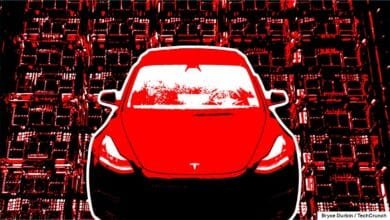Tesla Dojo: The Untold Story of Elon Musk’s AI Supercomputer

▼ Summary
– Tesla shut down its Dojo supercomputer project and disbanded the team in August 2025, reversing years of investment and promotion.
– Dojo was designed to train Tesla’s Full Self-Driving neural networks and support AI ambitions like autonomous vehicles and humanoid robots.
– Elon Musk declared Dojo an “evolutionary dead end” and shifted focus to partnerships for chips, including a $16.5 billion deal with Samsung for AI6 chips.
– The shutdown reflects strategic pivoting from in-house hardware development to reliance on external partners for AI training infrastructure.
– Despite initial hype, Tesla did not attribute its self-driving progress to Dojo and had recently promoted Cortex, another AI training supercluster, instead.
Tesla’s ambitious Dojo supercomputer project, once hailed as the backbone of the company’s artificial intelligence and autonomous driving efforts, has officially been discontinued after years of development and significant investment. Initially positioned as a custom-built system designed to train neural networks for Full Self-Driving (FSD) and humanoid robotics, Dojo represented Tesla’s push toward hardware independence and next-generation AI capabilities.
In a surprising reversal, Elon Musk announced in August 2025 that Tesla would shut down the Dojo initiative and dissolve the team behind it. This decision came just weeks after the company projected that Dojo 2, a second supercluster based on proprietary D2 chips, would reach full scale by 2026. Musk described the project as “an evolutionary dead end,” signaling a major strategic shift away from in-house supercomputing development.
The move underscores Tesla’s pivot toward partnerships with established chip manufacturers like Samsung, with whom it signed a $16.5 billion deal for next-generation AI6 processors. These chips are intended to power everything from FSD and the Optimus robot to high-performance data center training. Musk clarified that while Dojo would not move forward, elements of its architecture would live on through AI6-based systems.
Dojo was conceived to handle the enormous computational demands of Tesla’s vision-based autonomous driving system. Unlike competitors using lidar and radar, Tesla relies solely on cameras and neural networks to interpret visual data, a approach that requires immense processing power for training and simulation. The supercomputer was meant to reduce reliance on expensive third-party hardware, particularly from Nvidia, whose GPUs have become increasingly difficult to procure amid soaring demand.
At the heart of Dojo was Tesla’s custom D1 chip, manufactured by TSMC and unveiled in 2021. Though less powerful than Nvidia’s A100, the D1 was optimized for AI workloads and represented Tesla’s bid for greater control over its technological stack. Plans for a more advanced D2 chip aimed to overcome bandwidth limitations by integrating entire compute tiles onto single silicon wafers.
Despite high expectations, Dojo failed to meet several milestones. Musk had projected it would become one of the world’s top five supercomputers by early 2024, with an exaflop capacity rivaling hundreds of thousands of high-end GPUs. Those targets were never publicly achieved, and by mid-2024, Tesla began emphasizing Cortex, a large-scale AI training cluster based on Nvidia H100 GPUs, instead.
The dissolution of the Dojo team, including the departure of lead engineer Peter Bannon and several staff members to a new AI chip venture, reflects the challenges of sustaining highly specialized in-house projects. Some analysts view the shutdown as a pragmatic rather than failed endeavor, a strategic realignment toward more scalable, partner-driven solutions.
Financial commitments to supercomputing remain intact; Tesla still plans to invest $500 million in a Buffalo-based facility, though it will no longer house Dojo architecture. The company’s broader AI ambitions, including autonomous taxis and advanced robotics, now rest on a hybrid approach, leveraging both internal development and external partnerships in an increasingly competitive and resource-intensive landscape.
(Source: TechCrunch)





